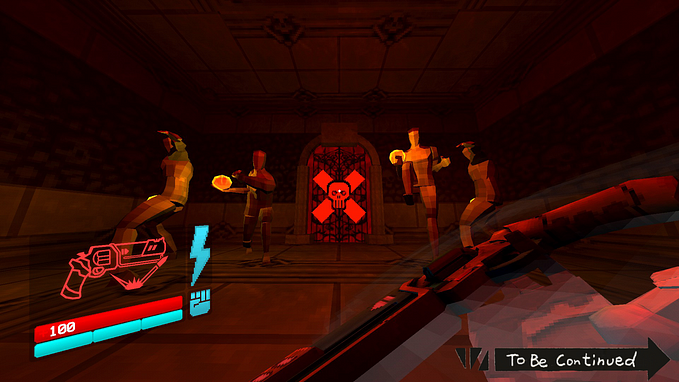Sid Meier turns 70: Celebrating a Legendary Game Creator

Some games stays with us for years, garners a loyal fanbase, and is fondly remembered even decades later. I encountered one such game for the first time in 1992 and still find myself occasionally playing its modern reincarnation, which has evolved into a vast universe. On February 24th, Sid Meier, the creator of this “Civilization” universe, celebrates his 70th birthday.
Sidney Meier was born on February 24, 1954, in Sarnia, Canada, to Swiss and Dutch immigrants. From an early age, Sid was known for his vivid imagination, constructing entire cities for his toy soldiers out of everyday materials and creating intricate stories with complex plots.
The Meier family later moved to the United States, settling in Michigan, where young Sidney developed a passion for board games, significantly influencing his future career as a game designer. The family didn’t own a computer, so Sid’s first encounter with computing was at the University of Michigan, where he initially intended to study history due to his interest in the subject. The university’s computing center used an IBM System/360 mainframe, primarily for laboratory calculations, with no games available. However, Sid became so fascinated with computer technology and programming that he switched his major to computer science.
During his university years, Sid was introduced to video games, not on computers but on arcade machines popular in many American malls and bars during the 70s. It’s unclear how much change Sid Meier spent playing Pong and Space Invaders, but it was likely a considerable amount. He was particularly fond of Space Invaders, imagining a story of aliens invading Earth, fought off by a brave hero — a narrative not present in the game itself, but that didn’t stop Sid from imagining it.

By the time he graduated, Sidney had acquired an Atari 800, choosing it over an Apple II due to cost considerations. He worked as a field service engineer for a company that installed software and operating systems, and later as a programmer for a firm developing software for cash registers and vending machines. In his spare time, he worked on personal projects on his Atari, attempting to create his own game. He dreamed of making a living from this but was not yet confident that game development could provide a stable income.
Sid’s first game, an assembler-written clone of his favorite Space Invaders, was recorded on a floppy disk, accompanied by a printed manual, packaged in a plastic bag, and taken to a nearby computer store. The store owner agreed to sell it, and soon Sid Meier received his first income from a computer game he had created, proving that it was indeed possible to make money from this venture. However, it was the arcade game Formula 1 Racing for Atari that brought him real commercial success, which he later sold to the British company Acorn.

In 1982, friends introduced Meier to Bill Stealey, a former military pilot working as the Director of Strategic Development at General Instrument, who also had a passion for computer games. Despite Stealey’s real-world flying experience, Meier easily beat him several times in the arcade game Red Baron on Atari, explaining that he had analyzed the game’s algorithms and could easily predict the computer opponents’ behavior. Stealey shared his dream of creating a realistic aviation simulator with engaging missions. Meier confidently stated he could write such a game, and Stealey assured him that if he succeeded, he would personally handle the marketing and sales of the product.
The result of this partnership was the creation of the aviation simulator Hellcat Ace for Atari. Meier, consulting with Stealey on flight control aspects, wrote the game in just a month. Stealey kept his promise: he sold 50 copies of the game in the first week, and soon made deals with major players in the computer tech market, turning the simulator into a real hit. A year later, the game was ported to the Commodore 64, and then to the IBM PC. Encouraged by this success, the friends decided to start their own company, which they named MicroProse.

Right from the start of the project, programmer Andy Hollis joined the two founders. Within a month of its inception, MicroProse became profitable, and by 1986, its revenue exceeded $10 million. Nearly every game released by the Meier and Stealey team became a bestseller: the platformer Floyd of the Jungle, the 2D shooter Chopper Rescue, and the 8-bit flight simulators developed with Bill Stealey’s direct involvement, such as Spitfire Ace and Solo Flight. These were followed by undeniable hits like F-15 Strike Eagle, F-19 Stealth Fighter, Gunship, Project Stealth Fighter, Red Storm Rising, and others. Over time, MicroProse evolved from just a developer to also acting as a publisher, distributing games from other small studios. The company soon opened a branch in the United Kingdom, and by 1987, the popular magazine Computer Gaming World listed MicroProse among the top five computer game manufacturers alongside Activision and Electronic Arts.
As a child, Sid Meier spent much time at his grandmother’s country house, located near a railway. He enjoyed watching the passing passenger and freight trains and was fascinated by the automatic switching of signals and railway points. These childhood memories inspired Meier to develop a game in the relatively new genre at the time — economic strategy. He borrowed the main idea from the board game “1829” by Francis Tresham, which is focused on railway construction.

Although MicroProse had already released the air traffic control simulator Kennedy Approach, designed by Andy Hollis in 1985, allowing players to experience the role of an air traffic controller at Kennedy International Airport, the new game introduced a significant economic component, transforming the player into a railway magnate. The project was named Sid Meier’s Railroad Tycoon and soon gained widespread popularity, much like the earlier game Sid Meier’s Pirates!.. From 1987, MicroProse began to frequently use Sid Meier’s name in the titles of their products. Bill Stealey later recalled the reason for this: “We were having lunch at the Software Publishers Association, and actor Robin Williams was at the meeting. After about two hours of conversation, he turned to me and said, ‘Bill, you should put Sid’s name on the game boxes and promote him as a star!’”. This is how the “Sid Meier’s” prefix eventually made its way onto MicroProse game covers.
Following the success of Railroad Tycoon, Sid envisioned a grand strategy game where players could manage the development of an ancient civilization, make scientific discoveries, develop weapons, explore new lands, establish cities, engage in diplomatic negotiations, and wage wars with neighbors. Meier’s love for history, which initially led him to the University of Michigan, played a role in this concept. The challenge was fitting this expansive game mechanics into the relatively modest hardware resources of personal computers at the time. Meier’s past interest in board games came in handy here, as these games involved a level of abstraction combined with a strict set of rules, offering a broad spectrum of unpredictable game strategies.
His inspiration came from the board game “Civilization”, created by Francis Tresham in 1980 and published by Hartland Trefoil. The confidence that such a computer game would interest users came from the success of the city-building simulator SimCity, released in 1989. Avalon Hill held the rights to publish the board game “Civilization” in the U.S., and MicroProse hired several specialists from this company to work on their project, including lead designer Bruce Shelley.

This turn-based strategy game, titled Sid Meier’s Civilization, was released in 1991 and quickly shattered all imaginable sales records, with 1.5 million copies sold since its launch. Numerous computer magazines and independent analysts have hailed Civilization as one of the most significant and legendary video games in history. Civilization became the progenitor of a distinct genre of single-player turn-based strategy games known collectively as 4X, an acronym for “Explore, Expand, Exploit, Exterminate.”
In 1993, MicroProse merged with the well-known game developer Spectrum HoloByte. Over the following years, the company continued to release popular strategy games and simulators, but Sid Meier and the new CEO of the firm, Lou Gorman, encountered a series of personal disagreements, leading to Meier’s departure from MicroProse. His final project with the company was the game Magic: The Gathering.
In 1996, Meier, along with game designer Jeff Briggs, founded a new company, Firaxis Games, which continued to develop the Civilization and Pirates series and, in collaboration with Electronic Arts, released the innovative wargame Sid Meier’s Gettysburg!
Sid Meier, celebrating his 70th birthday this year, is rightly considered one of the most influential figures in the gaming industry. Currently, Meier resides in Hunt Valley, Maryland, with his wife Susan and son Ryan. Despite his advanced age, he still serves as the creative director and a source of inspiration for the younger employees at Firaxis Games.
This article is written by Techical Editor Valentin Holmogorov and supported by the Serverspace team.
Serverspace is an international cloud provider offering automatic deployment of virtual infrastructure based on Linux and Windows from anywhere in the world in less than 1 minute. For the integration of client services, open tools like API, CLI, and Terraform are available.










